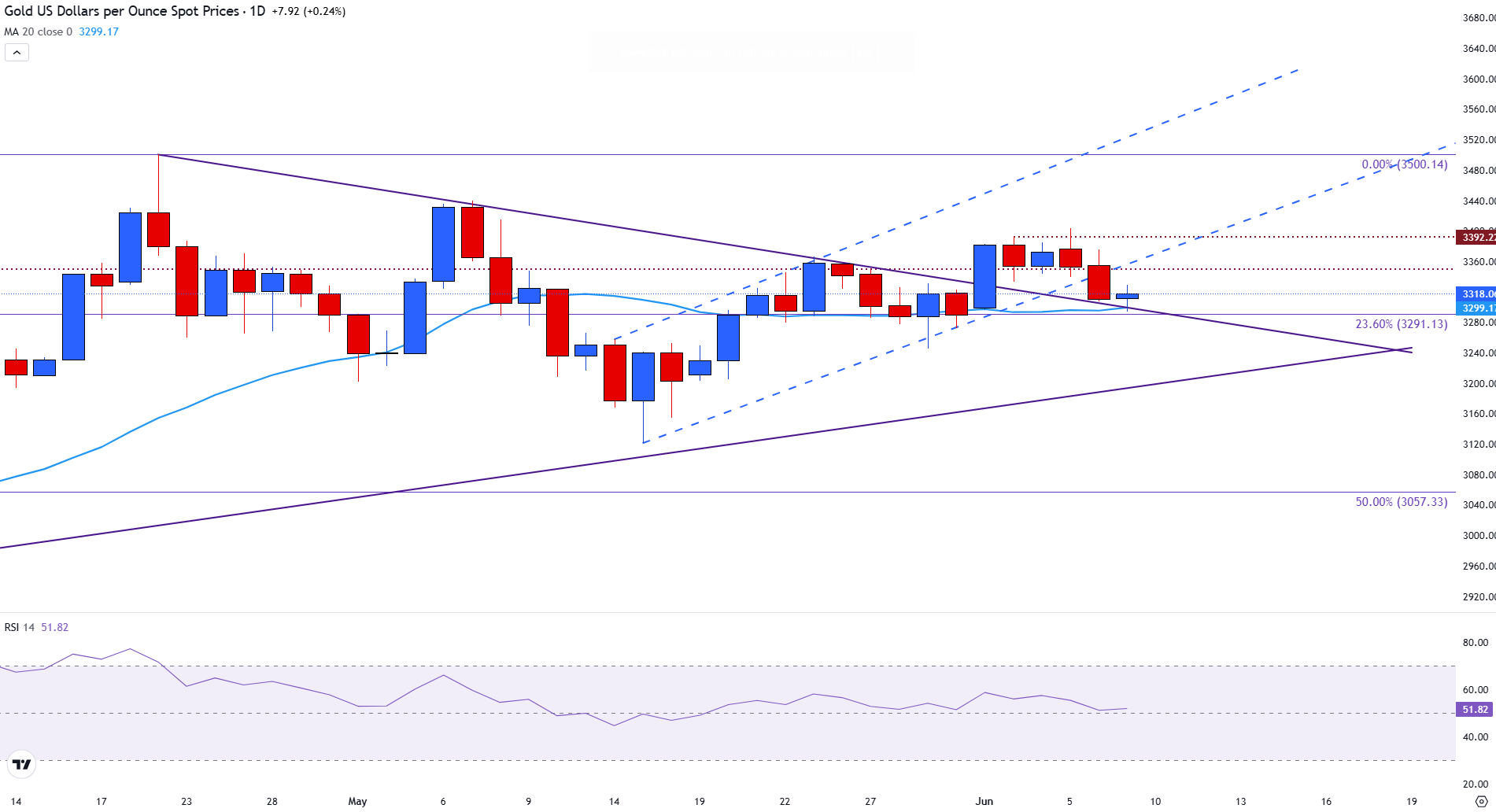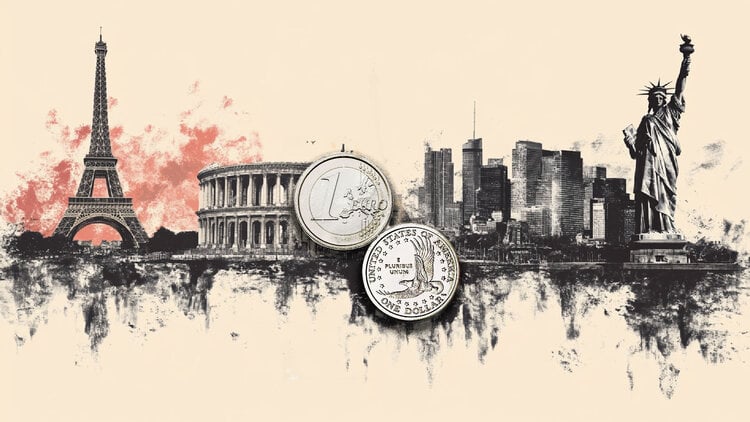- Gold advances as the persistent commercial tensions and the attractiveness of sure shelter of precious metals drive prices.
- Commercial conversations between the US and China are scheduled for Monday, being a key catalyst for gold and US dollar prices.
- Gold prices exceed $ 3,300 with resistance at $ 3,350.
Gold prices remained at a high level on Monday, despite the beginning of commercial conversations between the US and China in London. Together with 50% US tariffs on steel and aluminum imports, gold has been supported by broader geopolitical tensions, such as the current war between Ukraine and Russia during the weekend, which have reinforced the status of safe gold refuge.
Daily Gold Summary: Can conversations between the US and China raise gold as a safe refuge?
- The Non -Agricultural Payroll (NFP) report on Friday was better than expected, which has relieved fears that the Federal Reserve (Fed) cuts short -term rates.
- On Thursday, Reuters reported that the Canadian Prime Minister described the US tariffs as “illegal”, while Mexico and the European Union expressed similar frustrations.
- On Wednesday, the president of Mexico, Claudia Sheinbaum, described the new tariffs as “unfair, unsustainable and without legal foundations”, warning that if an agreement is not reached, Mexico will be forced to respond with reprisal measures.
- Canada and the EU have also threatened with reprisals if progress is not achieved in commercial conversations this week.
Gold prices are still under pressure on Monday, going back from the maximum of last week, since the technical indicators suggest a weakening of the bullish impulse. After not being able to stay above the resistance zone of 3,339–3,392 $, prices broke below the short -term support about $ 3,320 and are now testing the Fibonacci recoil level of 23.6% in $ 3,291. This level has become a key pivot in the short term, with a daily closure below it that will probably attract new sales pressure.
The broader prices action continues to consolidate within a symmetrical triangle, suggesting indecision among market participants. The lower limit of this pattern is currently under threat, and a confirmed break could expose the support of the ascending trend line around 3,250–3,260 $. Below that, deeper losses could carry prices towards the fibonacci setback of 50% in 3,057 $, a level that aligns with the previous structural support.
On the positive side, any rebound must exceed the region of 3,339–3,392 to reaffirm the bullish control. A rupture above this area would pave the road to the 3,500 $ brand, which remains the goal in the medium term for gold bulls. However, with the simple mobile average (SMA) of 20 days, making flatness about $ 3,299, the rise impulse has clearly stagnated.
Impulse indicators also reflect this indecision. The Relative Force Index (RSI) is currently around 52, indicating a neutral feeling without immediate over -sales conditions. This suggests that gold can continue to consolidate unless it is triggered by an important fundamental catalyst, such as updates on US interest rates or more geopolitical developments.
The technical structure of gold has weakened slightly after the rupture below the short -term support on Friday. A decisive closure below $ 3,291 would probably change perspective at the short term, while staying above the triangle base could still offer a path back to resistance.
Daily Gold Graph

FAQS GOLD
Gold has played a fundamental role in the history of mankind, since it has been widely used as a deposit of value and a half of exchange. At present, apart from its brightness and use for jewelry, precious metal is considered an active refuge, which means that it is considered a good investment in turbulent times. Gold is also considered a coverage against inflation and depreciation of currencies, since it does not depend on any specific issuer or government.
Central banks are the greatest gold holders. In their objective of supporting their currencies in turbulent times, central banks tend to diversify their reserves and buy gold to improve the perception of strength of the economy and currency. High gold reserves can be a source of trust for the solvency of a country. Central banks added 1,136 tons of gold worth 70,000 million to their reservations in 2022, according to data from the World Gold Council. It is the largest annual purchase since there are records. The central banks of emerging economies such as China, India and Türkiye are rapidly increasing their gold reserves.
Gold has a reverse correlation with the US dollar and US Treasury bonds, which are the main reserve and shelter assets. When the dollar depreciates, the price of gold tends to rise, which allows investors and central banks to diversify their assets in turbulent times. Gold is also inversely correlated with risk assets. A rebound in the stock market tends to weaken the price of gold, while mass sales in higher risk markets tend to favor precious metal.
The price of gold can move due to a wide range of factors. Geopolitical instability or fear of a deep recession can cause the price of gold to rise rapidly due to its condition of active refuge. As an asset without yield, the price of gold tends to rise when interest rates lower, while the money increases to the yellow metal. Even so, most movements depend on how the US dollar (USD) behaves, since the asset is quoted in dollars (Xau/USD). A strong dollar tends to keep the price of gold controlled, while a weakest dollar probably thrusts gold prices.
Source: Fx Street
I am Joshua Winder, a senior-level journalist and editor at World Stock Market. I specialize in covering news related to the stock market and economic trends. With more than 8 years of experience in this field, I have become an expert in financial reporting.





